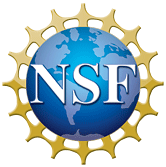Search by property
From CSDMS
This page provides a simple browsing interface for finding entities described by a property and a named value. Other available search interfaces include the page property search, and the ask query builder.
List of results
- Model:LOGDIST + (Flow velocities at N levels in the vertical, assuming a logarithmic velocity profile)
- Model:WASH123D + (Fluid velocity, pressure, temperature, sal … Fluid velocity, pressure, temperature, salinity, concentrations, thermal flexes, and matrial fluxes at all nodes at any desired time. volumetric, energy, and mass balance at all types of boundaries and the entire boundary at any specified time. Br>For details refer to Yeh et al., 2005 Technical Report on WASH123DYeh et al., 2005 Technical Report on WASH123D)
- Model:RivMAP + (For a single image: centerlines, widths, c … For a single image: centerlines, widths, channel direction, curvatures</br>For multiple images: (centerline) migration areas, erosion and accretion areas, cutoffs, cutoff statistics, channel belt boundaries, grid generation to map spatial changes, spacetime maps of changes in planform variablestime maps of changes in planform variables)
- Model:GPM + (Free-surface flow and wave action through time. Erosion and deposition through time. Optionally, compaction, including porosity reduction.)
- Model:WAVEWATCH III ^TM + (From wave heights to spectral data, see manual)
- Model:TURB + (Gaussian distribution of instantaneous turbulent fluid shear stresses at the bed)
- Model:LateralVerticalIncision + (Geometry of river entrenchment thought time)
- Model:Gc2d + (Glacier thickness and elevation)
- Model:SEDPAK + (Graphical Display and surface plot)
- Model:WSGFAM + (Gravity flow velocity, Depth-integrated sediment load, down-slope sediment flux, flux convergence or divergence, erosion or deposition rate.)
- Model:Plume + (Grid of Sediment rate in m/day for specified grain size classes)
- Model:AquaTellUs + (Grid of deposition of different grains over time. The model generates postscript files of stratigraphic sections.)
- Model:Landlab + (Gridding component provides ASCII and/or netCDF output of grid geometry.)
- Model:Sun fan-delta model + (Grids of topography)
- Model:DeltaRCM Vegetation + (Grids of water surface elevation, discharge, bed elevation, and vegetation density values for each cell. Additionally, sand fraction of each vertical cell within a grid cell.)
- Model:CASCADE + (H, fluxes, discharge, catchment geom, etc, at all time steps, as welle as grid connectivity)
- Model:HSPF + (HSPF produces a time history of the runoff … HSPF produces a time history of the runoff flow rate, sediment load, and</br>nutrient and pesticide concentrations, along with a time history of water</br>quantity and quality at any point in a watershed. Simulation results can be</br>processed through a frequency and duration analysis routine that produces</br>output compatible with conventional toxicological measures (e.g., 96-hour</br>LC50).xicological measures (e.g., 96-hour LC50).)
- Model:HexWatershed + (Hexagon DEM, flow direction, flow accumulation, stream grid, stream segment, stream order, stream confluence, subbasin, watershed boundary, etc.)
- Model:TauDEM + (Hydrologic information derived from DEM)
- Model:GSFLOW-GRASS + (Hydrologic model discretization, input files for GSFLOW, output files from GSFLOW (hydrologic model))
- Model:SWMM + (In addition to modeling the generation and … In addition to modeling the generation and transport of runoff flows, SWMM can also estimate the production of pollutant loads associated with this runoff. The following processes can be modeled for any number of user-defined water quality constituents:</br></br>* dry-weather pollutant buildup over different land uses</br>* pollutant washoff from specific land uses during storm events</br>* direct contribution of rainfall deposition</br>* reduction in dry-weather buildup due to street cleaning</br>* reduction in washoff load due to BMPs</br>* entry of dry weather sanitary flows and user-specified external inflows at any point in the drainage system</br>* routing of water quality constituents through the drainage system</br>* reduction in constituent concentration through treatment in storage units or by natural processes in pipes and channelsby natural processes in pipes and channels)
